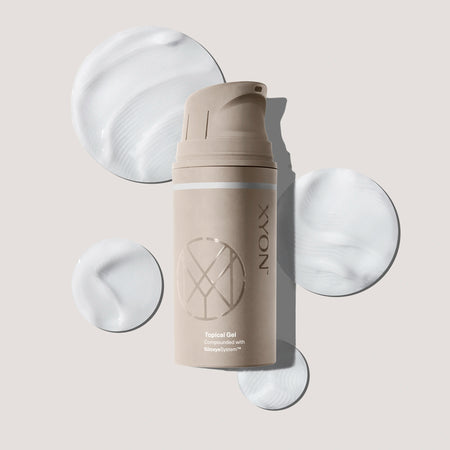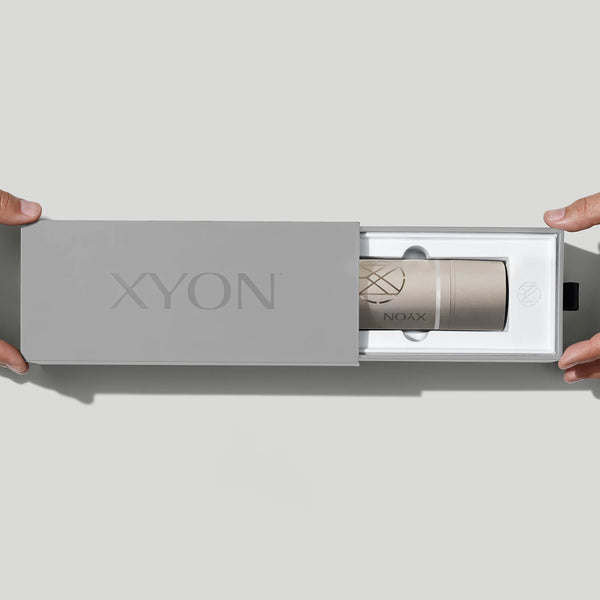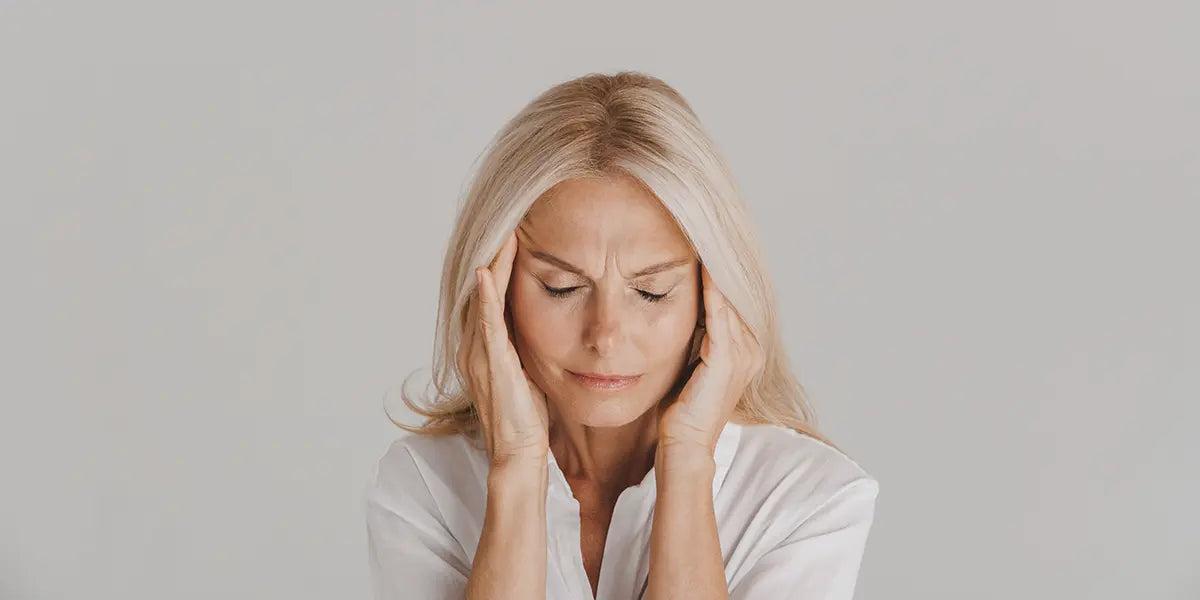Female androgenetic alopecia (also known as female pattern hair loss) is a common cause of hair loss in women that can be complex to treat. Topical minoxidil is currently the only treatment approved by US and Canadian regulatory agencies to treat this hair loss disorder, but there are other options available that you may not be familiar with.
One of the treatments we’ll be examining in this article is finasteride for women. Clinical studies have identified finasteride as an effective and generally well-tolerated treatment in men. But does it benefit female patients the same way?
Let’s review whether women can take finasteride for hair loss, the best dosage of finasteride for women, whether the treatment is safe for female patients and discuss common side effects that women have reported while taking finasteride.
Experience a new, lower risk alternative to oral finasteride and other topical formulas.


Treat your hair loss with XYON's topical finasteride with minoxidil for women
Can women take finasteride for hair loss?
Yes, women can take finasteride for hair loss. A doctor will assess the appropriateness of finasteride treatment on a case-by-case basis. If you are a candidate for finasteride treatment, your doctor will prescribe this medication to you for off-label use.
Take note:
Importantly, there are a few instances when women cannot take finasteride for hair loss. If you are pregnant, nursing, or trying to become pregnant, you must not use finasteride. If you are of childbearing potential and not trying to become pregnant, you may still be eligible for finasteride. Your doctor will ensure that you understand the potential benefits and risks and are taking the appropriate precautions to avoid becoming pregnant (e.g., using highly effective contraception).
The primary concern for women taking finasteride for hair loss is that the medication has the potential for causing birth defects. For this reason, it is contraindicated in women of child-bearing potential. Finasteride is a 5-alpha reductase inhibitor, which acts on an enzyme to lower production of the hormone dihydrotestosterone (DHT). DHT is essential for normal male fetal development and lower than normal levels of this hormone have been linked to developmental abnormalities in animal studies.
Does finasteride work for female hair loss?
Finasteride may be beneficial for some women experiencing female pattern hair loss. The medication works to help lower levels of the sex steroid hormone, DHT, which triggers a process called follicle miniaturization. Follicular miniaturization involves changes to hair follicle tissues that render them unable to produce healthy hairs. Over time, without early and proactive treatment, this could lead to permanent hair loss.
Due to the multifactorial nature of female pattern hair loss, it’s unclear how much of a role DHT levels play in the development of hair loss in women. The data tells us that some female patients respond positively to finasteride, while others do not see significant improvements to the condition of their hair.
Remember:
It’s important to keep in mind that a positive response to hair loss treatment is measured in two ways: the maintenance of existing hairs (no further hair loss) as well as regrowth (growth of hairs in areas previously affected by thinning).
One early double-blinded study in postmenopausal women compared oral finasteride 1mg daily to a placebo. There were no statistically significant differences in hair loss between the two treatment groups over the entire duration of the study. Additionally, there were slight to moderate improvements in hair growth in both the finasteride (67%) and placebo (54%) groups after 1 year of treatment. Based on these findings, investigators concluded that neither hair loss nor hair growth improved on finasteride (Price et al., 2000).
These results contradict data from a study conducted a few years later, which was not placebo-controlled and enrolled only premenopausal women. In this case, the study treatment was oral finasteride 2.5mg, together with an oral contraceptive pill. In this study, clinician assessments determined that 62% of patients had improvements in hair density, while 35% had stabilization of hair loss. Patient assessments differed slightly from these numbers, with 78% reporting improvements in hair density and 22% reporting stabilization of hair loss (Iorizzo et al., 2006).
Subsequent studies in 2018 and 2019 also reported on the potential clinical benefit of taking finasteride for female patients. The 2018 study examined the use of 2.5mg oral finasteride in both pre and postmenopausal women. 29.5% of participants were assessed as having slight improvement in hair growth while 65.2% were determined to have significant improvement in hair growth. Furthermore, investigators concluded that finasteride seemed to work better when patients had less advanced hair loss and were older when they first started to lose their hair (Won et al., 2018).
In addition to these studies, there have been several smaller case series and individual case reports on the use of finasteride for women. Cases involved participants who were mostly postmenopausal with normal androgen levels (i.e., no evidence of elevated DHT or related hormones) and most reported improvements in hair density and/or stabilization of hair loss. In all cases where improvements were noted, at least 6 months of consistent treatment with finasteride was needed (Stout and Stumpf, 2010).
What is the best dosage for women of finasteride?
The best dosage of finasteride for women will depend on the method of administration. For oral finasteride, there is some data to suggest that the standard dose for men of 1 mg daily may not be sufficient to achieve significant hair regrowth in female patients. This has led some studies to examine the use of finasteride dosages ranging from 2.5 mg up to 5 mg (Iamsumang et al., 2020).
For topical finasteride, the concentration of finasteride may vary even more, since final concentrations for compounded treatments will partly depend on the vehicle or base. Additionally, the choice of base will also have an impact on the efficacy of treatment at the level of the hair follicle. You can visit our page on SiloxysSystem™ Gel to learn more about our proprietary delivery system for medications, designed to help reduce the risk of side effects.
Ultimately, if you are prescribed finasteride, your doctor will base the dosage of finasteride needed on the extent of your hair loss and your tolerance for the medication to strike a balance between safety and clinical benefit. It’s not uncommon for patients to begin with a lower dose and work with their doctors to safely adjust this over time.
Finasteride for women: Takeaway
The use of finasteride for women’s hair loss is an issue that continues to draw attention. It’s potentially an important treatment option for female pattern hair loss. Like men, women also have the option of being prescribed either an oral or topical formulation of finasteride. But there are added precautions and warnings surrounding pregnancy and nursing, as well as certain breast cancers, that are unique to female patients. You can learn more about these precautions by reading our article on finasteride side effects in women.
Studies have shown that finasteride may help improve both hair density and hair diameter in female pattern hair loss patients following at least 6 months of consistent treatment. But because androgen involvement in the development of this female pattern hair loss is less clear, the clinical response amongst female patients can vary from patient to patient.
To learn more about whether finasteride is right for you, consider reaching out to a doctor or hair loss specialist today.




